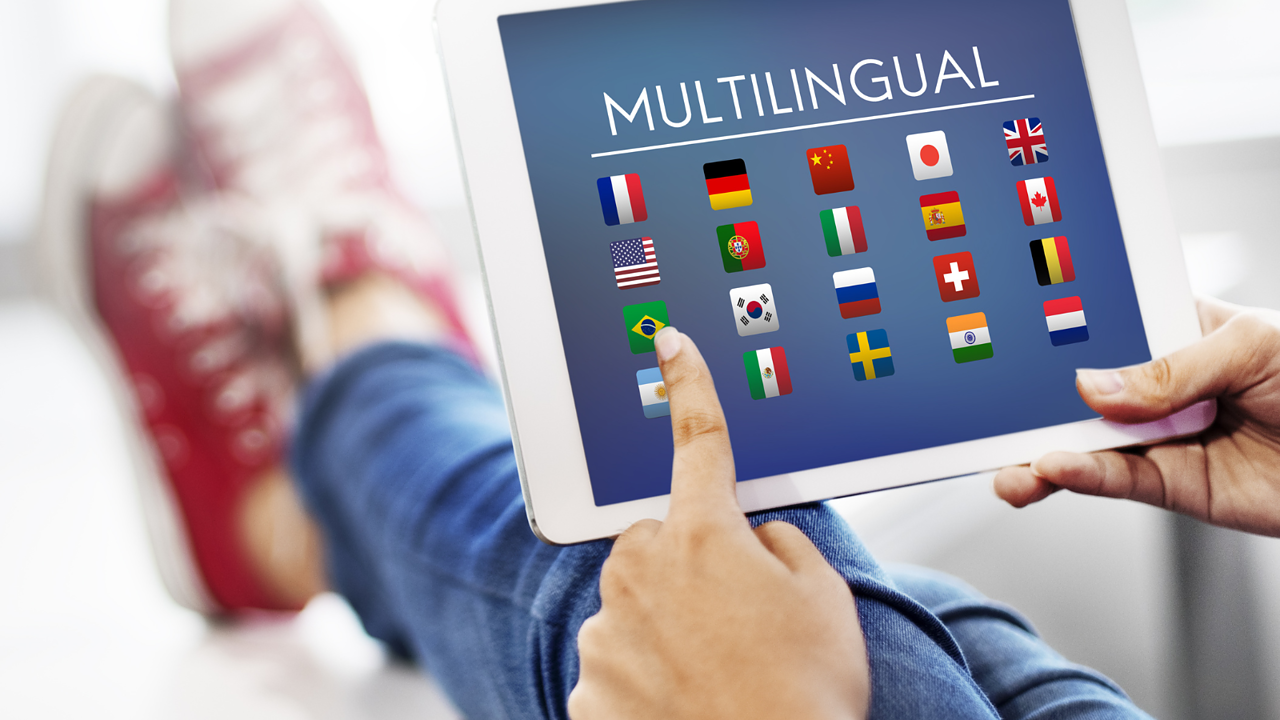
How to create a multilingual WordPress Website?
Creating a multilingual WordPress site is an effective way to reach a broader audience, improve user engagement, and enhance SEO in different languages. This can be particularly useful for businesses looking to expand internationally, or for content creators aiming to cater to a diverse audience. Below is a step-by-step guide on how to create a multilingual website using WordPress.

Understanding Multilingual Websites
A multilingual website offers its content in two or more languages, increasing accessibility and user engagement. Such a site can significantly enhance SEO by reaching a wider audience and improving local search rankings.
Planning Your Multilingual Site
Before you start, plan out the languages you want to include. Consider your target audience, and which languages they speak. Also, think about how you will manage content:
- Translation Management: Decide whether translations will be done manually by you or your team, or if you will use automatic translation services.
- Content Organization: Determine if you want a separate domain, a subdomain, or just a language directory (e.g., example.com/fr/ for French).
- Language Selection: Choose languages based on your target audience's demographics.
- Cultural Nuances: Consider cultural differences to ensure content is appropriate and engaging.
- Structure Options: Decide whether to use different domains, subdomains, or directories to organize your languages. Each has implications for SEO and user experience.
Choosing a Multilingual Plugin
WordPress does not support creating a multilingual site out of the box, so you will need a plugin. There are several popular multilingual plugins available:
- WPML (WordPress Multilingual Plugin): This is a premium option that offers extensive support and features, ideal for complex sites.
- Polylang: A user-friendly free plugin with a pro version offering additional features like support for URL modifications.
- TranslatePress: A plugin that allows you to translate directly from the front end of your site, with support for both manual and automatic translations.
- MultilingualPress: It uses a multisite installation to manage each language separately.
Choose a plugin based on your specific needs, budget, and comfort level with WordPress.
Installing and Setting Up Your Plugin
Once you’ve chosen a plugin, install it on your WordPress site. Here's how you might do it with WPML, one of the most popular plugins:
- Purchase and Download: Buy WPML from wpml.org and download the plugin files.
- Installation: Go to your WordPress dashboard, click on ‘Plugins’, then ‘Add New’, and upload the WPML ZIP file. Activate it.
- Configuration: Follow the setup wizard to add languages, choose language switcher options (how users switch languages on your site), and configure URL formats.
- Translation Management: Set up translation management within WPML to manage who translates your site, and whether to use manual or automatic translation services.
Translating Content
- Posts and Pages: Use your chosen plugin to translate your posts and pages. Most plugins allow you to create translations for each piece of content directly in the WordPress editor.
- Themes and Plugins: Make sure your themes and plugins are translation-ready (i.e., they support gettext, a WordPress standard for translating strings). Plugins like WPML can scan themes and plugins for translatable strings.
- Widgets and Menus: Translate these elements via your multilingual plugin. Some plugins offer special widgets like language switchers.
SEO Considerations
For each language version of your site, consider SEO:
- SEO Plugins Compatibility: Ensure your multilingual plugin is compatible with SEO plugins like Yoast SEO.
- Hreflang Tags: Use hreflang tags to tell search engines about the language variants of your pages. Many multilingual plugins handle this automatically.
- Sitemaps: Ensure your multilingual plugin generates separate sitemaps for each language to help search engines index your site efficiently.

Maintaining and Updating Your Multilingual Site
Maintaining a multilingual site involves more than just keeping WordPress and plugins updated. You need to:
- Update Translations: Regularly update content and ensure translations are synchronized.
- Monitor Performance: Check if the multilingual site affects site performance and optimize if necessary.
- Feedback: Regularly collect user feedback regarding the multilingual features and make adjustments as needed.
Testing
Before going live, thoroughly test your site in all the languages you have added. Check for:
- Translation Quality: Ensure accuracy and context are maintained.
- Functionality: Verify all forms, buttons, and navigation elements work correctly in each language.
- Layout Issues: Sometimes translations can break layouts due to longer or shorter text. Adjust as necessary.
Creating a multilingual WordPress site is a significant undertaking that involves careful planning and execution, but it can provide a tremendous boost in reaching a global audience and enhancing user engagement across diverse linguistic backgrounds. Here are some more detailed steps and considerations to ensure the success of your multilingual WordPress site.
Choose the Right Hosting Environment
The hosting environment can significantly impact the performance of your multilingual WordPress site, especially if your audience is global. Consider these aspects:
- Server Location: Choose a web host with servers close to your target audience to minimize load times. For a global audience, consider using a content delivery network (CDN) to speed up delivery.
- Resource Allocation: Ensure that your hosting plan provides sufficient resources (e.g., bandwidth, memory, CPU) to handle the increased load of serving multiple versions of your site.
Design Considerations for Multilingual Sites
Designing a website that accommodates multiple languages requires attention to detail in several areas:
- Right-to-Left (RTL) Support: If you're including languages like Arabic or Hebrew, ensure your theme supports RTL text.
- Responsive Design: Check that your website’s design adjusts well on devices of various sizes in all languages. Language-specific modifications might be necessary to accommodate different text lengths and layouts.
- Cultural Sensitivity: Be mindful of cultural nuances and symbols. Colors, images, and symbols can have different meanings in different cultures.
Legal and Regulatory Compliance
Depending on your target audience, you may need to comply with local regulations:
- Data Protection Laws: If you are targeting users in the European Union, ensure compliance with the General Data Protection Regulation (GDPR). This may affect how you handle user data and privacy across different languages.
- Accessibility: Make sure your site meets accessibility standards (such as WCAG) in all languages to ensure it is usable by people with disabilities.
Regular Content Updates and Management
Maintaining a multilingual site means more than just translating the initial set of content. It involves:
- Continuous Translation: As new content is added, it needs to be translated consistently in terms of tone and style across all languages.
- Localization: Beyond direct translation, consider localizing content so that it resonates culturally with each target audience.
- Quality Control: Regularly review and update translations to maintain accuracy and relevance, especially if using automated translation tools.
Marketing and Promotion
Tailor your marketing efforts to each language and cultural group:
- SEO Strategies: Develop separate SEO strategies for each language. Keyword research, meta tags, and content should be optimized for each language’s audience.
- Social Media: Manage social media accounts in different languages or use tools that allow targeting posts to audiences based on their language and location.
- Email Marketing: Segment your email marketing lists based on language and send tailored content that appeals to each segment.
User Support and Interaction
Providing support and interaction options in multiple languages can significantly enhance user experience:
- Multilingual Support Team: If possible, have support staff who can communicate in the languages your site supports.
- Interactive Elements: Ensure that forms, chatbots, and other interactive elements work seamlessly in all languages and script directions.
Performance Monitoring and Optimization
Monitor how the multilingual aspects of your site affect its overall performance:
- Analytics: Use tools like Google Analytics to monitor traffic, engagement, and conversion rates for each language version.
- Optimization: Continuously optimize the performance of your site. This might include refining the translation plugin settings, improving load times, and ensuring seamless navigation across different languages.
FAQ: Multilingual WordPress Site

Some of the most popular and robust plugins for creating a multilingual WordPress site include WPML (WordPress Multilingual Plugin), Polylang, TranslatePress, and MultilingualPress. WPML offers comprehensive features and support for complex sites, while Polylang is great for simpler, budget-friendly setups. TranslatePress allows for front-end translations, and MultilingualPress leverages the WordPress Multisite feature for each language.
It depends on your audience and specific needs. You should prioritize translating key content that is important for user engagement and conversion, such as product pages, main navigation, and essential information pages. Over time, you might choose to translate additional content based on user feedback and analytics.
Most multilingual plugins provide a management interface that helps you track which pieces of content have been translated and which haven't. For ongoing management, consider setting up a workflow where new content is automatically flagged for translation, and updated content prompts a review of existing translations.
Introducing additional languages can increase the complexity of your site, which might impact performance. To mitigate this, ensure that your hosting solution is robust enough, utilize caching strategies, and optimize your database. Also, consider using a content delivery network (CDN) to improve load times globally.
Use a multilingual plugin that supports SEO best practices, such as proper hreflang tags, which help search engines understand the language and regional targeting of your content. Also, optimize SEO for each language separately, including doing keyword research and meta descriptions in each language.
Start by analyzing your current audience demographics and target market research to determine which languages are most relevant for your users. Additionally, consider market potential, customer value, and your ability to support and market in those languages.
Yes, tools like Google Translate can be integrated into your site to provide automatic translations. However, be aware that automatic translations may not always be accurate or contextually appropriate. For best results, especially for critical content, use professional translation services or native speakers to review and adjust the translations.
Choose themes and plugins that are known to be compatible with multilingual setups and ensure they are kept up to date. Before updating, always back up your site and test updates in a staging environment to check for any issues with the multilingual functionality.
Design elements should be culturally appropriate and adaptable to different languages. For instance, some languages require more space due to longer word lengths, and some are read right-to-left. Ensure your theme can handle such variations without breaking the layout.
If possible, provide customer support in all the languages offered on your site. This could include multilingual support staff, FAQs in multiple languages, and using multilingual chatbots. Ensure that all support resources are easily accessible to users in their preferred language.
Conclusion
Building and managing a multilingual WordPress site is an ongoing process that involves not just technical implementation, but also strategic content planning, marketing, and regular maintenance. By embracing these complexities and continuously refining your approach, you can maximize the reach and effectiveness of your site across diverse global audiences.





